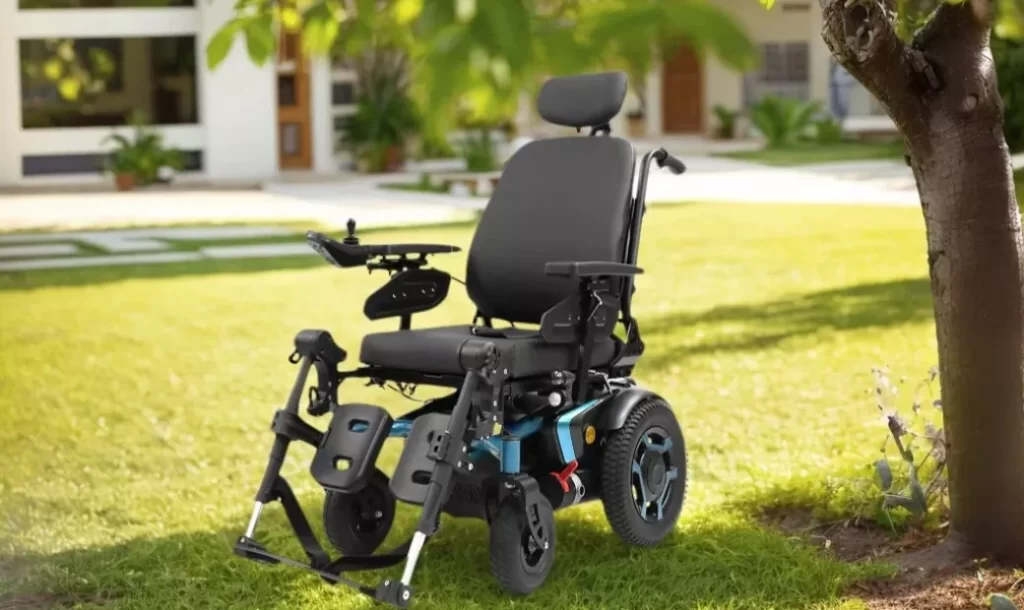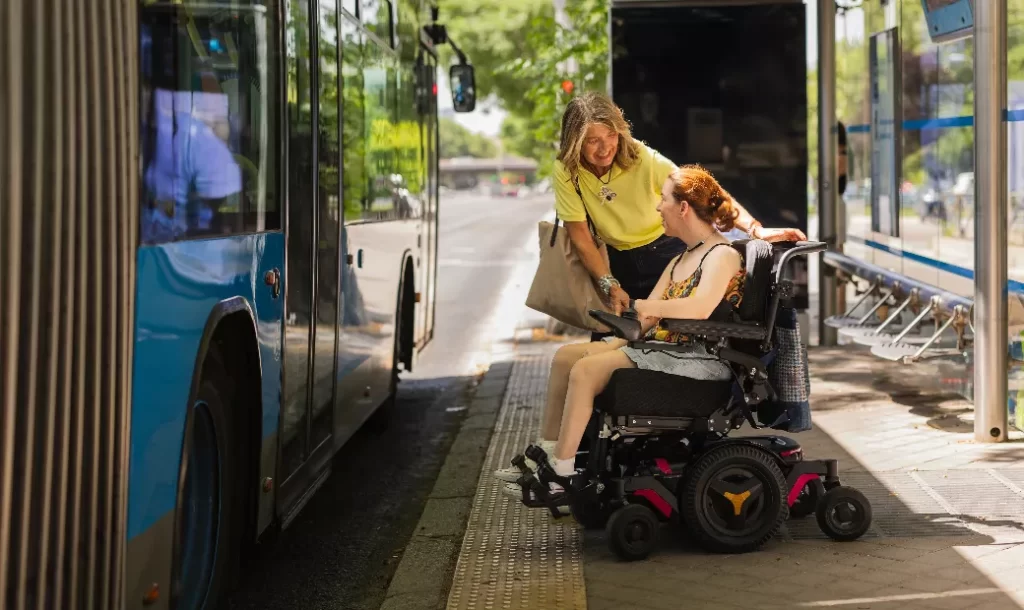Contact Us
Government Funding Boosts Accessibility: Motorized Wheelchair Initiatives Expand Globally
Introduction
In a world where mobility is a key to independence, the role of government funding in promoting accessibility cannot be overstated. Today, powered mobility solutions like motorized wheelchairs are transitioning from luxury items to essential mobility devices. Thanks to increased public investment, policy reform, and global advocacy, many countries are beginning to remove financial and structural barriers. This article explores how government funding is shaping global accessibility of motorized wheelchairs, the major drivers, key regional examples, industry implications, and what this means for manufacturers and suppliers such as INTCO Medical.
The Importance of Powered Mobility Devices
Mobility as a fundamental right
Mobility is not just about travel—it’s about dignity, participation, and inclusion. For many people with disabilities, access to a motorized wheelchair means the difference between isolation and engagement. As the United States Agency for International Development (USAID) points out, one of its five focus areas in the wheelchair sector is ensuring “persons with disabilities … have greater access to affordable and appropriate wheeled mobility devices and services.”
This highlights that the challenge is two-fold: device availability and affordability/access.
The challenge of cost and infrastructure
Motorized wheelchairs (also called power wheelchairs) are considerably more expensive than basic manual chairs. In addition, appropriate infrastructure—ramps, accessible transport, trained service providers—is required to fully leverage them. The cost barrier means that without government or institutional support many users simply cannot access these devices.
Why government funding matters
Public funding (either through reimbursement, grants, subsidies, or direct provision) helps break down the cost barrier, enabling individuals who cannot bear the full costs to access motorized mobility. It also signals a societal commitment to accessibility. For example, in Israel, the Ministry of Health runs a service allowing insured individuals to apply for assistance in financing a motorized wheelchair, under specified eligibility criteria.
Thus government funding both enables individual mobility and drives market expansion.
Global Trends in Government-Funded Accessibility
Funding initiatives at the global and philanthropic level
Large-scale funding isn’t just national—global philanthropy plays a significant role. For example, the philanthropic arm of Google LLC, Google.org, awarded US $20 million in global grants aimed at disabling-mobility innovations across over 50 countries.While not strictly government, this investment underscores how global resources are aligning with accessibility objectives.
National policy and reimbursement models
Countries are increasingly creating or reforming policies that reimburse or subsidize wheelchairs. Consider:
In France, beginning December 1 2025, standard wheelchairs will be fully reimbursed by public health insurance, according to Le Monde magazine.
In India, the Accessible India Campaign (Sugamya Bharat Abhiyan) launched in 2015 aims to create a more inclusive built environment, including free motorised tricycles for persons with 70–90% disability.
These policies shape demand for motorized wheelchairs and encourage suppliers to adapt.
Regional and sub-national grant programmes
Beyond national schemes, many states and regions provide targeted grants for assistive mobility. For instance, in the U.S., state programmes like the Alabama “Ability Loan Program” support assistive technology and adaptive equipment via low-interest loans.
Similarly, there are databases tracking hundreds of grants for mobility devices.
This layered funding ecosystem means users may combine national, regional and nongovernmental sources.
Summary in tabular form
|
Region / Level |
Funding Mechanism |
Impact on Motorized Wheelchair Accessibility |
|
Global philanthropy |
Large grants (e.g., Google.org) |
Innovation and subsidised devices in low-resource settings |
|
National health policy |
Reimbursements, subsidies (e.g., France) |
Lower out-of-pocket cost → higher uptake |
|
National disability programmes |
Assistive mobility grants (e.g., India) |
Targeted device access for specific populations |
|
Sub-national / state level |
Loans, grants, adaptive equipment funding |
Localised access and complementary funding |
Key Drivers Accelerating Motorized Wheelchair Accessibility
Ageing populations and rising disability prevalence
As populations age, and as medical advancements allow people with disabilities to live longer, the demand for powered mobility rises. Governments are responding by investing in accessibility infrastructure and devices.
Technological advancement and cost reduction
Innovations such as shared-control wheelchairs, brain-controlled systems and modular power attachments are pushing down costs and raising functionality. For example, a recent academic paper Sensor on an eye-tracking system for motorized wheelchair control reports 99% classification accuracy, potentially enabling more affordable access.Such advances mean subsidisation programmes can deliver more value.
Policy and rights framework for people with disabilities
International human rights frameworks, such as the Convention on the Rights of Persons with Disabilities (CRPD), drive national commitments to accessibility. Governments increasingly recognise mobility devices as part of the accessible environment mandate.
Legislation like the U.S. Architectural Barriers Act demonstrates how government investment in accessible infrastructure goes hand-in-hand with mobility device access.
Market dynamics and industrial opportunity
As funding programmes expand, manufacturers and OEM/ODM suppliers see greater market potential. For companies involved in motorized or powered-mobility products, this signals growth opportunity—especially in emerging markets where funding gaps remain.
Challenges and Considerations for Implementation
Eligibility and administrative burden
Even when funding exists, navigating eligibility and paperwork can be challenging. For example, while Israel’s Ministry of Health supports motorised wheelchair financing, the applicant must meet multiple criteria (age under 70, cognitive and coordination capacity, home adaptation) and apply through a formal process.
Such administrative burdens can delay access or exclude candidates.
Quality, maintenance and service ecosystem
Funding device purchase is only one part. Adequate servicing infrastructure, user-training, maintenance and replacement are vital to ensure long-term use. If government funding programmes focus only on acquisition, without follow-through, device abandonment may increase.
Equity across regions and countries
National schemes in high-income countries may be robust, but many low- and middle-income countries face major funding gaps. While global philanthropy helps, scaling funding to meet global demand is a major challenge.
Avoiding one-size-fits-all in device provision
User needs vary widely—what works for one mobility-impaired person may not suit another. Funding programmes must incorporate device customisation, clinical assessment and training—not merely subsidising a generic motorised wheelchair.
Market Implications and Strategic Insight for Suppliers
Growing demand signals
With more governments committing to reimbursement or subsidies, demand for motorized wheelchairs is set to grow. Suppliers and ODM/OEM manufacturers—like INTCO Medical—should monitor policy changes, tender opportunities and reimbursement frameworks.
Aligning product development to funding criteria
Manufacturers should tailor offerings to meet the specifications, safety certifications and cost ceilings of government programmes. For example, if a health ministry sets criteria for motorized wheelchairs under funding support (e.g., eligibility under certain disability categories, speed limits, environment suitability) suppliers must ensure compliance—just as Israel’s criteria specify motorised chairs limited to 6 km/h in home/work environments.
Aligning product features with funding requirements increases acceptance and uptake.
Navigating global markets and supply chains
As accessibility programmes expand in emerging markets, manufacturers can leverage global supply chains. However, they must also account for local regulatory and reimbursement landscapes, import tariffs, and service support.
The role of branding and partnerships
Manufacturers can partner with governments, NGOs and disability service organisations to co-design programmes, secure bulk contracts, and get endorsement by accessibility organisations—enhancing credibility and market penetration.
Future Outlook: Accessibility on a Global Scale
Scaling to low- and middle-income countries
Much of the motorized wheelchair market remains unmet in developing regions. According to wheel mobility research, significant portions of the global population live with mobility impairment but lack access to powered devices.
Governments in these regions are increasingly expected to adopt funding models, supported by donors and international organisations.
Integration of smart technologies
As smart mobility evolves (eye-tracking, shared autonomy, IoT integration) powered wheelchairs will become more sophisticated—and potentially more cost-effective at scale. Industry players should anticipate this shift and prepare accordingly.
Holistic accessibility frameworks
Device funding alone isn’t enough; governments are increasingly aware that accessibility requires building-in transport infrastructure, service networks, training and community inclusion. Motorized wheelchair funding will increasingly be one piece of a broader accessibility ecosystem.
The impact for users
For individuals, the cumulative effect of funding + accessible devices + infrastructure is profound: increased independence, better employment opportunities, improved mental health and broader social inclusion. For society, enhancing mobility means unlocking economic potential and reducing long-term care costs.
Conclusion
Government funding is a powerful lever in improving global accessibility of motorized wheelchairs. From large-scale philanthropic grants to national reimbursement frameworks and local grants, the financial landscape is shifting toward greater inclusion. As technology advances and policy awareness grows, we are positioned for a future where powered mobility is not a privilege but a standard right.
For manufacturers and suppliers, especially those like INTCO Medical that provide ODM/OEM solutions in the mobility-aid sector, aligning product development with funding criteria, building service ecosystems and engaging with government programmes will be key to capturing growth.
By investing in accessibility, governments empower individuals, stimulate industry innovation and foster a more inclusive society. The journey is ongoing—but with funding as a catalyst, mobility for all is becoming ever more achievable.
About INTCO Medical
INTCO Medical is a leading manufacturer in the rehabilitation and mobility-aid field, offering factory-direct OEM/ODM services for cooling/heating therapeutic devices as well as mobility solutions. With a focus on quality, innovation and global outreach, INTCO partners with brands and institutions worldwide to support accessible healthcare and assistive mobility products.




